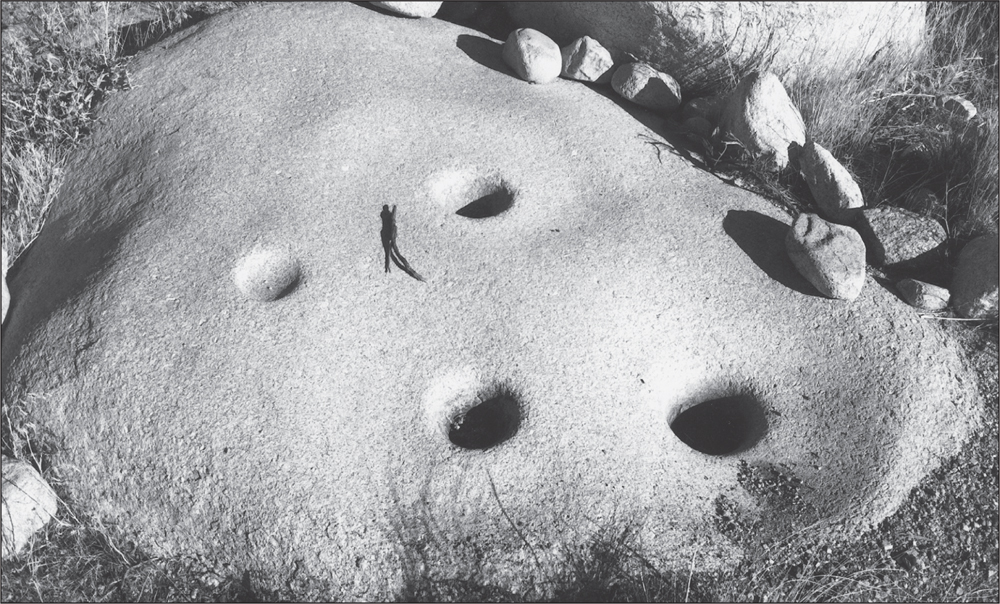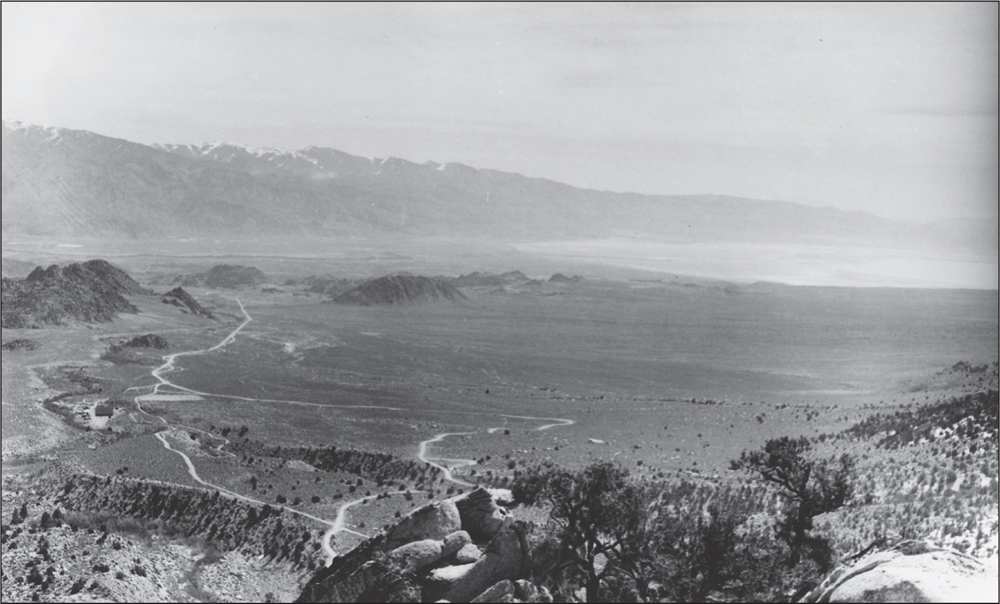INTRODUCTION
Location filming has always intrigued the moviegoer. When sitting at home or at a theater, one might say, “Where is that place?” One might wonder, “Where is that giant boulder my favorite actor is standing on?” For some, it becomes a destination—they want to visit and see firsthand where all that movie magic took place. And that place is often the Alabama Hills.
Like director Ridley Scott said while filming Gladiator (2000), there was no other location in the world that could give them that grandeur, “not even Malta.” That is what has made and continues to make the Alabama Hills such a popular filming location. During Gladiator, it served as the Spanish Alps. The hills became India in 1939’s epic Gunga Din, and in Edmond O’Brien and Ida Lupino’s 1953 film The Hitch-Hiker, they served as Mexico.
The Alabama Hills lie under the majestic and jaw-dropping landscape of the Eastern High Sierras in the Owens Valley. As the afternoon sun slowly sets behind Mount Whitney, the ancient rock formations of the hills change colors and provide breathtaking beauty to fortuitous observers. This scenery resembles the Gobi and Sahara Deserts, Africa, India, Spain, Peru, Argentina, Arizona, Utah, Colorado, Alaska, Mexico, California, and even other planets.
The Alabama Hills are still used as a movie location for directors and is administered by the Bureau of Land Management. They are also a recreational area where visitors can go fishing, rock climbing, and camping and where artists come to sketch or paint spectacular scenery.
This was a very sacred place to the native Paiute, who lived in the area for hundreds of years. They have left evidence of their lives throughout the Owens Valley region. Petroglyphs, bedrock mortars, burial grounds, and obsidian used for tools and weapons can be seen.
Trapper Joseph Reddiford Walker is credited with being the first white explorer in the area. Then, in 1864, Clarence King named Mount Whitney, the highest mountain in the contiguous United States, after his boss, Josiah Dwight Whitney, of the California State Geological Survey.
Clarence King climbed Mount Whitney in 1871, setting the pace for future climbers in the area. Norman Clyde climbed Whitney in 1930 and was commonly referred to by others as the “pack who walked like a man” because of his ability to carry heavy gear without apparent effort. Clyde ascended more peaks in the Eastern High Sierras than any other climber.
In the early part of the 20th century, climbers and visitors came back to Los Angeles with pictures and stories of these magical Alabama Hills. A movie crew decided to look into the place, and in 1920, Hollywood shot its first movie there. The rest is history.
As viewers of film, readers might remember the Alabama Hills because of Hoppy’s laugh, Roy Rogers’s horse, John Wayne’s voice, Errol Flynn’s moustache, the Lone Ranger’s mask, Gene’s singing, or perhaps even the cowboy rope tricks and stunts of Tom Mix or Monty Montana. Visitors to the Alabama Hills can attend the Lone Pine Film Festival, held annually on Columbus Day weekend since 1990, to experience the glory of films shot at this historic location.
Throughout these pages, readers will venture through time, viewing images that endure on film and others that have rarely been seen. Some visit the Alabama Hills because of their appreciation for movie-making and to connect with actors of old by standing in the exact spot the stars stood. Others may create permanent footprints by shooting new films to preserve memories of their own.

The Native Americans were the first group of people to live in the Alabama Hills and Eastern Sierras. Shown here is a bedrock mortar where holes were formed as a result of grinding acorns and other materials to make powders used for medicine, food, and any other survival necessities. This bedrock mortar was located where a Native American village once stood. Near here is the site of a massacre against Native Americans at the hands of white settlers.

This postcard from the early to mid-20th century shows the city of Lone Pine, California, at the intersection of US Highways 6 and 395. This was the gateway to the Alabama Hills and to the movie industry that has created hundreds of films here. The picturesque, 14,496-foot-high Mount Whitney looms among the Sierra Nevada in the background.

The Alabama Hills are among the earth’s oldest geological areas. The rocks in the hills have forged astonishing shapes that look like sculptures. These sculptures are natural rock formations that may look like a walrus, an eagle, or even a bat. There are many picturesque arches that can be discovered. The arches of the Alabama Hills bring artists from around the world. They can also be seen in films shot in the hills, such as the recent Lone Ranger (2013).

The CSS Alabama, for which the Alabama Hills were named, saw service around the world during the American Civil War. It operated successfully overseas but never docked in a Confederate port. It was sunk in 1864 by the USS Kearsarge off the coast of Cherbourg, France. (Courtesy of Library of Congress.)

Above is a view of the Alabama Hills in the 1930s. Frontier scenic space is plentiful, resulting in an ideal filming location for epics and Westerns. The image below shows a location from Brigham Young (1940) from atop Whitney Portal Road, with Owens Lake (a common film and commercial location) in the background. Republic Studios, Paramount Studios, RKO Pictures, Universal Pictures, MGM, 20th Century Fox, Warner Bros. Studios, Columbia Pictures, and more have filmed in the Alabama Hills.






